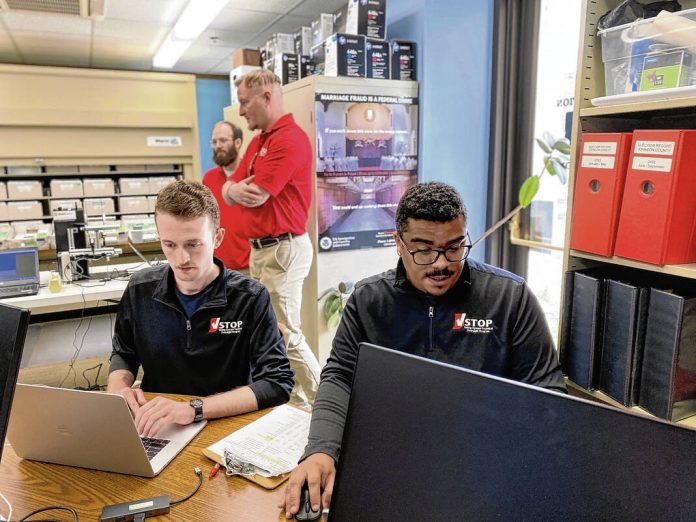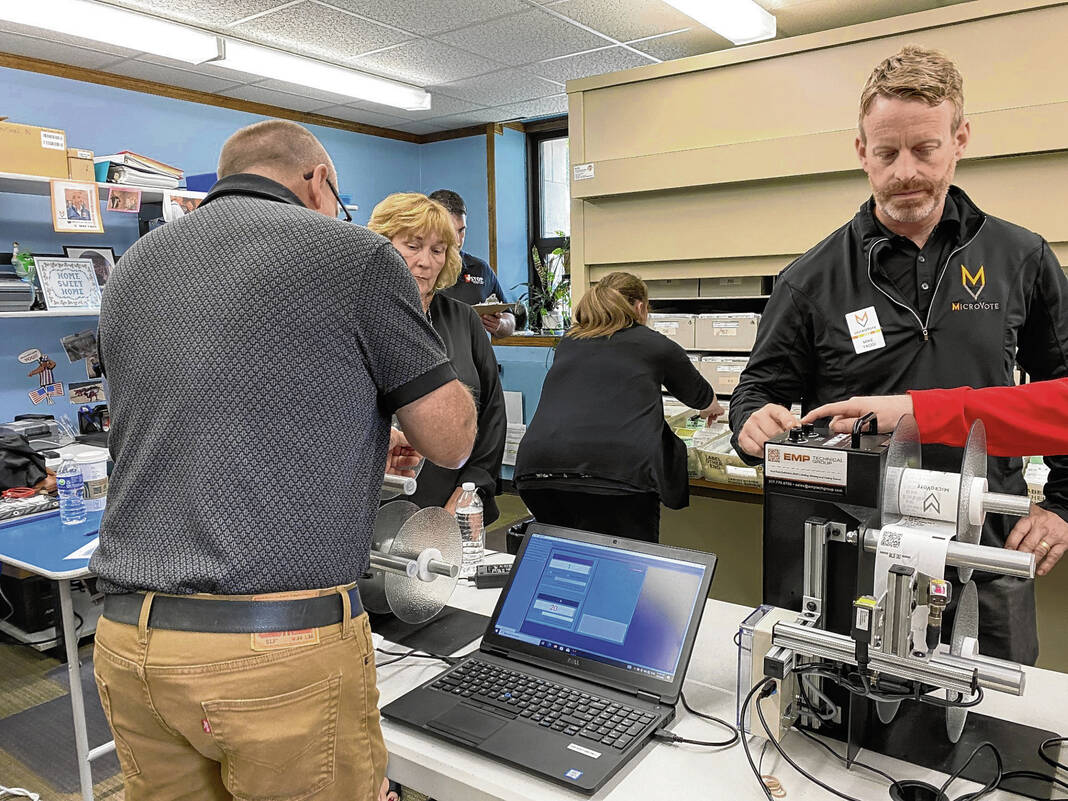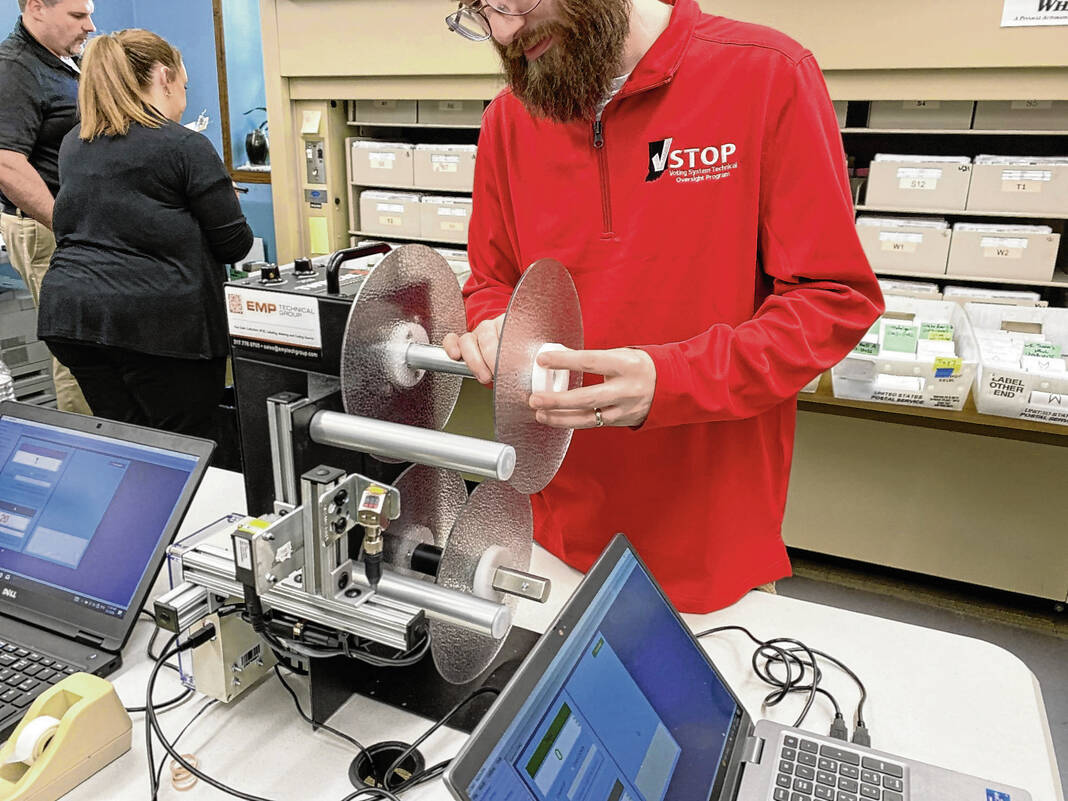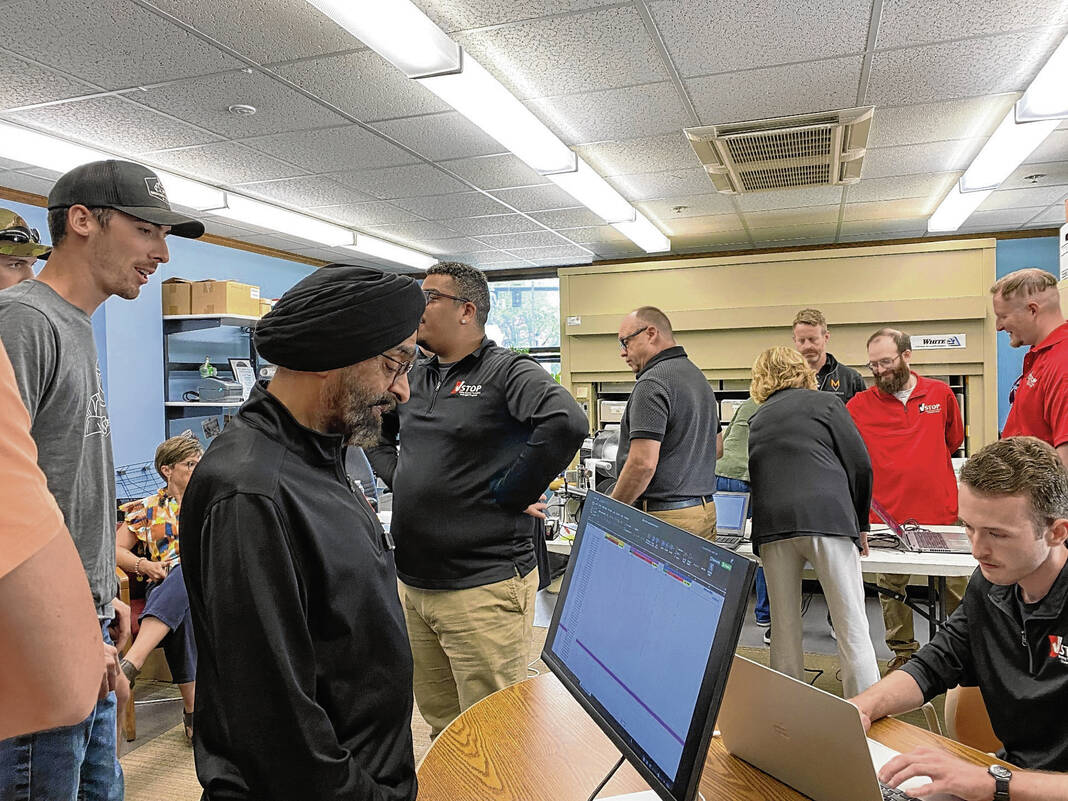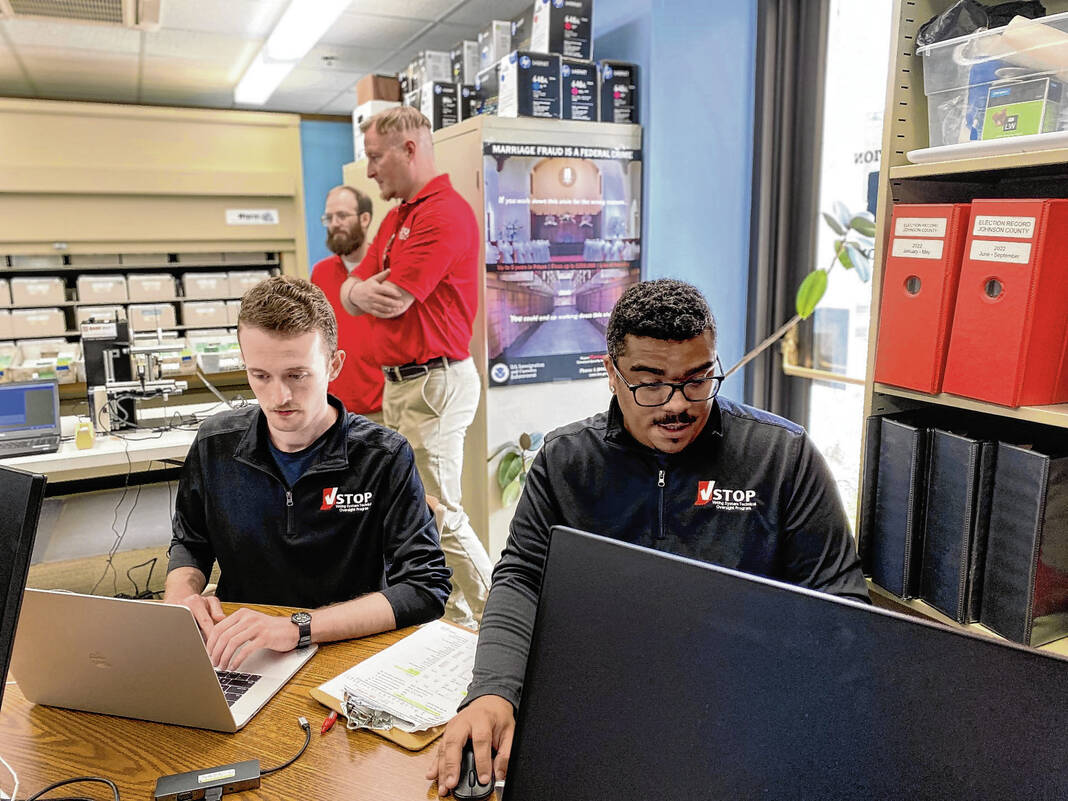Johnson County voters can be confident their votes were counted properly.
The county’s election board participated in a post-election audit Monday conducted by the Voting System Technical Oversight Program, or VSTOP. It was the first time the county participated in the program, which checked that the equipment and procedures used to count votes worked properly and the election presented the right outcome.
At the conclusion of the audit, 118 ballots were audited. There was a 100% match rate, meaning there was a 99% confidence rate that the machines functioned correctly and all election outcomes were correctly reported.
Election audits in Indiana are not mandatory and VSTOP is the only group authorized by Indiana to do audits officially, said Matt Housley, VSTOP election systems audit specialist. The group’s first audit was in 2018 and Johnson County is the 26th post-election audit it has completed.
VSTOP uses the Stark Audit Tool, named after Dr. Philip Stark from the University of California Department of Statistics. VSTOP is not able to touch the votes, as only election personnel and their vendors are authorized.
Dr. Chad Kinsella, VSTOP co-director, said the audit is not a vote recount but instead uses a sampling of the votes. Johnson County’s vendor MicroVote Systems produces a digital record of the ballot called the Cast Vote Record, or CVR. The auditing machine compares the CVR to the Voter-Verified Paper Audit Trail, or VVPAT, to ensure both records match.
The audit had a 1% risk limit, the designated percent chance the audit would not detect a potentially incorrect election outcome, Housley said. That means there is a 99% confidence level.
Housley said there is no way to get to a 100% confidence level unless there was a recount of the votes.
“Recounts are very expensive and they take a lot of time and, of course, the recount will just look at all the ballots and there is not a guarantee that there won’t be new errors in counting the ballots … ” said Dr. Jay Bagga, VSTOP co-director. “But with losing that one percent coming down to 99%, you are doing a fraction of the work that the recount will do, it’s incredibly efficient … “
The first step to the post-election audit was having people in attendance roll random numbers on dice. This creates the 20-digit random seed number, which assists the auditing machine in selecting a random sample of ballots.
Then, the Ballot Manifest (Inventory), a list that indicates how the ballots in an election are organized and stored, was entered into the audit tool and the ballot sample list and selection locations were identified, according to VSTOP’s brochure. County personnel began to sample ballots while VSTOP tracked the results and entered them into the audit tool. Sampling continued until the desired confidence level was met.
For Johnson County’s post-election audit, VSTOP decided to audit 106 ballots for three races. Election Day Republican ballots for the presidential, District 3 county commissioner and county coroner races were audited. Because of this, the 12 Democrat ballots that were picked were skipped.
“We are not able to audit a Democratic race today because there are so few ballots in the Democrat compared to the Republican since these are not separated by party,” Housley said. “… So for us to be able to pull a sample of ballots, we can’t separate them and we may have to do 400 ballots to get a sample of 20 Democratic ballots because the ratio of Democratic ballots is so low.”
Housley also said since the audit tested machines used during Election Day, it doesn’t matter what political party a person voted for since it’s the same machines.
The Johnson County Election Board unanimously approved the resolution authorizing the county to take part in the audit early last month. Johnson County Clerk Trena McLaughlin volunteered for the county to do the audit after she saw VSTOP officials present their 2024 audit plans at a conference, McLaughlin previously said.
“It’s important so that voters see how the process works with voting on machines, with voter confidence [to show] that our elections are safe, they are secure and they are accurate,” she previously said.
The official audit report will be released in late July. The public can look at the final report by issuing a public record’s request to the election office.


